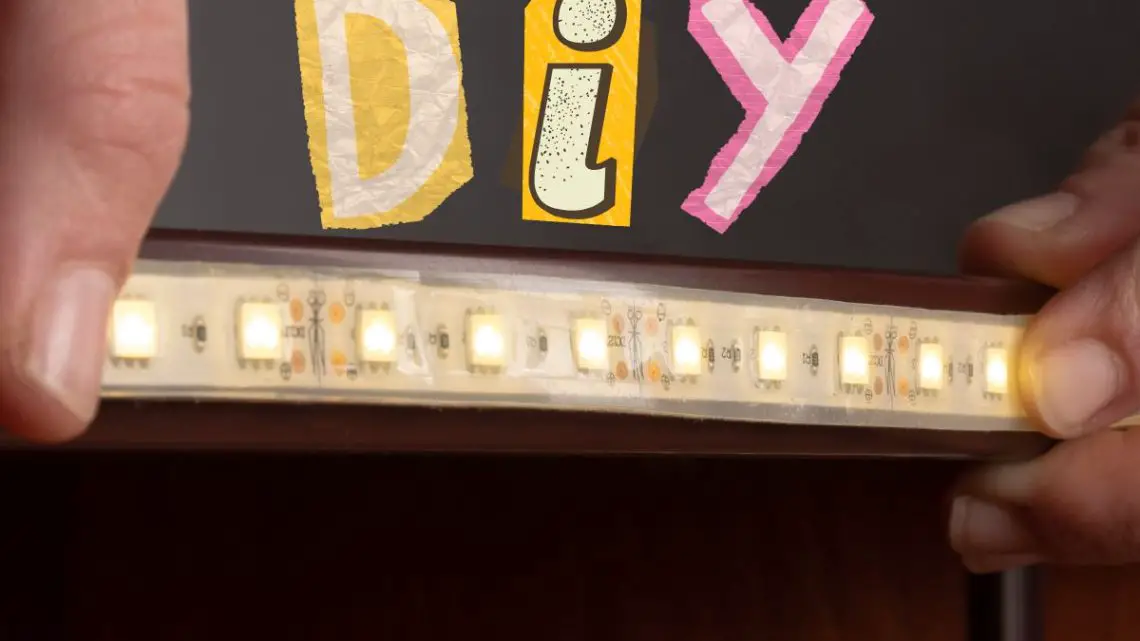
Ultimate Overview about LED Strip Lighting
September 9, 2021LED strip lights are new and versatile lighting. With many options and exceptions, they often have the following features:
- It consists of many single LED transmitters mounted on a narrow and flexible circuit board
- Use low voltage DC
- Supply is available in a variety of colors and brightness levels
- For mounting, the ship is a long spool (usually 5 feet) with a double-sided adhesive that can be cut to length.
Where can you use the LED Strip Light?
Creative possibilities abound with LED strips. Despite their versatility, LED Strip lighting can be installed anywhere and offer varying brightness levels, color, and programmed lighting scheme options. Here is a typical application example:
- LED ceiling lights and colorful laundry walls
- Cabinet Lighting – Kitchen and Bathroom Cabinet Bottom and Top
- plinth, carving, paneling, pedestal lighting
- Doors, windows, floors, stairs
- Signage and showcase
- bar area, club, restaurant
- Characteristic lighting for cabinets, showcases, and counters
- Exterior – Gardens, patios, driveway
- Christmas lights, weddings, and other special occasions
- General work light to replace fluorescent light
How big is the LED Strip Light?
The physical dimensions of an LED strip diode have a significant effect on its light output (measured in lumens). InStyle offers LED strips of two different LED sizes. One size is better than the other. The correct choice depends on the application you are using.
- 3528- These 3.5mm x 2.8mm LED strips are suitable for home lighting. Lighting is provided around ceiling quilts, pedestals, cabinets, steps, and windows.
- With LED 5050 – 5.0mm X 5.0mm these diodes are 40% larger than 3528 LEDs. They are about three times brighter and draw 3 times more power. For commercial applications where observers may be distant, such as high ceilings, colored walls, outdoor lighting, and ample ambient lighting, and home applications that require more light, such as “work lights.” Excellent.
Determine the brightness of the LED strip Light:
The brightness of the LED Strip Lighting is determined using metric lumens. Unlike an incandescent bulb, different LED strips can have different levels of efficiency, so watts are not always essential to decide on the actual light output.
The brightness of an LED strip is usually defined as lumens per foot (or meters). To provide an approximate amount of light output per foot with a conventional T8 fluorescent lamp, LED strips must provide at least 450 lumens per foot (1500 lumens per meter). (For example, 4 ft. T8 fluorescent = 4 ft. LED strip = 1800 lumens).
Three factors mainly determine the brightness of an LED strip:
- Light emission and efficiency for LED emitters
- Number of LEDs per run
- Power consumption per foot of LED StripStrip
- The LED light strip without brightness is a red flag. In addition, cheap LED Strips with excessive brightness should also be avoided, as they can overload the LEDs to the point of initial failure.
Inclusion of LED Strip lights
When buying lighting for your application, you need to know how to install and integrate it. It is very easy for some sheets, such as the B. DC Flex LED Strip, to use the StripStrip and stick it on a white surface. Other inserts make it challenging to insert, screw, or connect cables. Here are some points to consider. Let’s take a closer look at each of them in lepro.com:
- Know the total length of StripStrip you need
- You know how many inches and lines the headlights are
- Understand electrical and electrical requirements
- The flexibility of LED light bulbs
- Size of LED stripes: should they be waterproof?
- Determine if additional components are required, such as B. Connection or other cable connections
- Determine why you are malicious, run, or steal the programs you have installed
How to use four types of Light Strip Lights
Choose the colors, patterns, and line stripes of the lights you want for your project according to the illuminated area. It should be noted that some higher level of force is required to reduce the heat as it rises.
Determine power access
Choosing your Hine will increase watts per foot depending on the line parameters of your project. This affects your maximum power load and the amount of power supply required.
Light test
It is best to open and test the concrete the next day before laying it. You can use masking tape to catch it and put it in place. Note that this is the core of what you need before the actual installation.
Remove the bulb
Depending on the size of your cell phone, it may be easier or more difficult. Concrete is the best choice for long-term projects, but we also have many quick connectors and steel cords.
Enter a resolution
If you are looking for other professionals to put together, we offer a wide range of options and are a reliable supplier for KLUS light channels. With special attachments, this essence will add to the look of your lighting project.
Peel and collect
You will find that the lottery is suitable for your plan. LED bulbs can be cut, re-wired, peeled, glued, and in a clean, dry place. There are many indoor and outdoor lighting fixtures used by our small electric motors.
Add a dimmer or controller.
Our single color LEDs can be illuminated with a PWM dimmer or our LED dimensions. If you use our RGB or RGBW lighting fixtures, one of our colour pickers is perfect for blur performance and color change.



 HFN News is your leading source for fresh hydrogen and renewable energy updates. Amid the fast-paced growth of hydrogen companies, we provide top-notch news and insights about this exciting sector. Our coverage spans from hydrogen cars to global sustainable initiatives, and we highlight the latest in green jobs and developing hydrogen hubs. We invite you to share your local hydrogen news and explore today’s renewable energy job listings on our site. Thanks for choosing HFN News as your trusted guide to the hydrogen and renewable energy world!
HFN News is your leading source for fresh hydrogen and renewable energy updates. Amid the fast-paced growth of hydrogen companies, we provide top-notch news and insights about this exciting sector. Our coverage spans from hydrogen cars to global sustainable initiatives, and we highlight the latest in green jobs and developing hydrogen hubs. We invite you to share your local hydrogen news and explore today’s renewable energy job listings on our site. Thanks for choosing HFN News as your trusted guide to the hydrogen and renewable energy world!